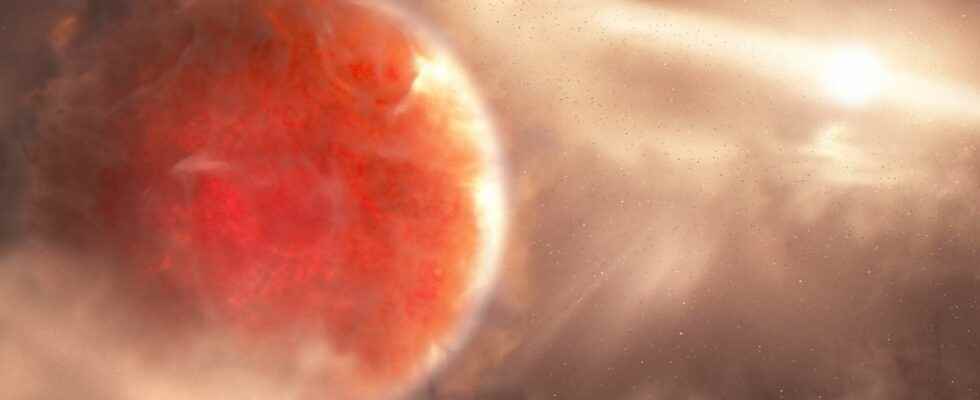You will also be interested
[EN VIDÉO] Hubble: its 10 discoveries on video! As Hubble celebrates three decades of good and loyal service, we invite you to come back to the major discoveries that have punctuated its career. Thanks to the millions of observations made since its launch, the space telescope has indeed been able to revolutionize our fundamental understanding of the Universe.
We know exoplanets about 5,000but directly imaged exoplanets, we know less than a hundred of them. The direct images of protoplanets which are still in the disk surrounding their young host star are valuable elements for understanding the formation of gas giant planets such as Jupiter. Now we have one more : AB Aurigae b, at 531 light years from U.S.
An Unusual Planetary Formation Scenario
The exoplanets detected indirectly (in particular by transits Where gears radials) are almost all relatively close to their starwithin 30 astronomical units, i.e. the distance separating Neptune of the Sun (an astronomical unit corresponds to the distance between the Earth and the Sun, i.e. 149.6 million kilometres). In the “classic” scenario of planetary formation, said toaccretion of heart, a giant planet forms in a protoplanetary disk from small bodies, from specks of dust to rocks, which collide and eventually form a core to several masses terrestrial. This core then slowly accumulates gas from the disc. This scenario explains well the gas giants like Jupiter, 5.2 astronomical units from the Sun, and Saturnat 9.5 astronomical units.
Conversely, the directly imaged exoplanets are generally far from their star (between 50 and 300 astronomical units) and much more massive than Jupiter (often more than five times more massive). Core accretion can hardly explain the formation of many of these planets. A plausible formation model for these objects is disk instability: when the massive disk around a star cools, gravity causes thecollapse disk into one or more planetary mass fragments. This scenario seems best suited for the formation of supermassive gas giant planets around 100 astronomical units.
A “super-Jupiter” far from its star
The latest addition to this list, AB Aurigae b, was discovered using the SCExAO instrument from the telescope Subaruin Hawaii, and the space telescope’s STIS and NICMOS instruments Hubble. This giant planetprobably about nine times more massive than Jupiter, is still in training in the protoplanetary disk of swirling dust and gas with a distinct spiral structure around the young star AB Aurigae, whose age is estimated at about 2 million years. That’s about the age the Solar system when his planets formed. For comparison, the Solar System is currently 4.6 billion years old.
Relative to its star, AB Aurigae b lies at a projected distance of about 93 astronomical units, or 13.9 billion kilometers, about three times farther than Neptune is from the Sun. At that distance, it would take a very long time for a planet the size of Jupiter to form by core accretion, and then again. This leads the researchers to conclude that it was likely disc instability that allowed this planet to form at such a great distance.
Thayne Currie, the principal investigator of the study published in the April 4 issue of Nature Astronomy (free access on arXiv), points out that the longevity of Hubble has played a special role in helping researchers measure theorbit of the protoplanet. He was originally very skeptical that AB Aurigae b was a planet. The archive data of Hubblecombined with Subaru imagery, proved crucial in changing his mind: We could not detect this movement in a year or two. Hubble provided a time base, combined with data from Subaru13 years old, which was enough to be able to detect orbital motion. »
What you must remember
- The Subaru and Hubble telescopes have made it possible to detect in direct imaging an exoplanet nine times more massive than Jupiter and 93 times further from its star than the Earth from the Sun.
- It is probably the instability of the disk that allowed this giant planet to form at such a great distance, rather than the “classic” mechanism of core accretion.
Interested in what you just read?
